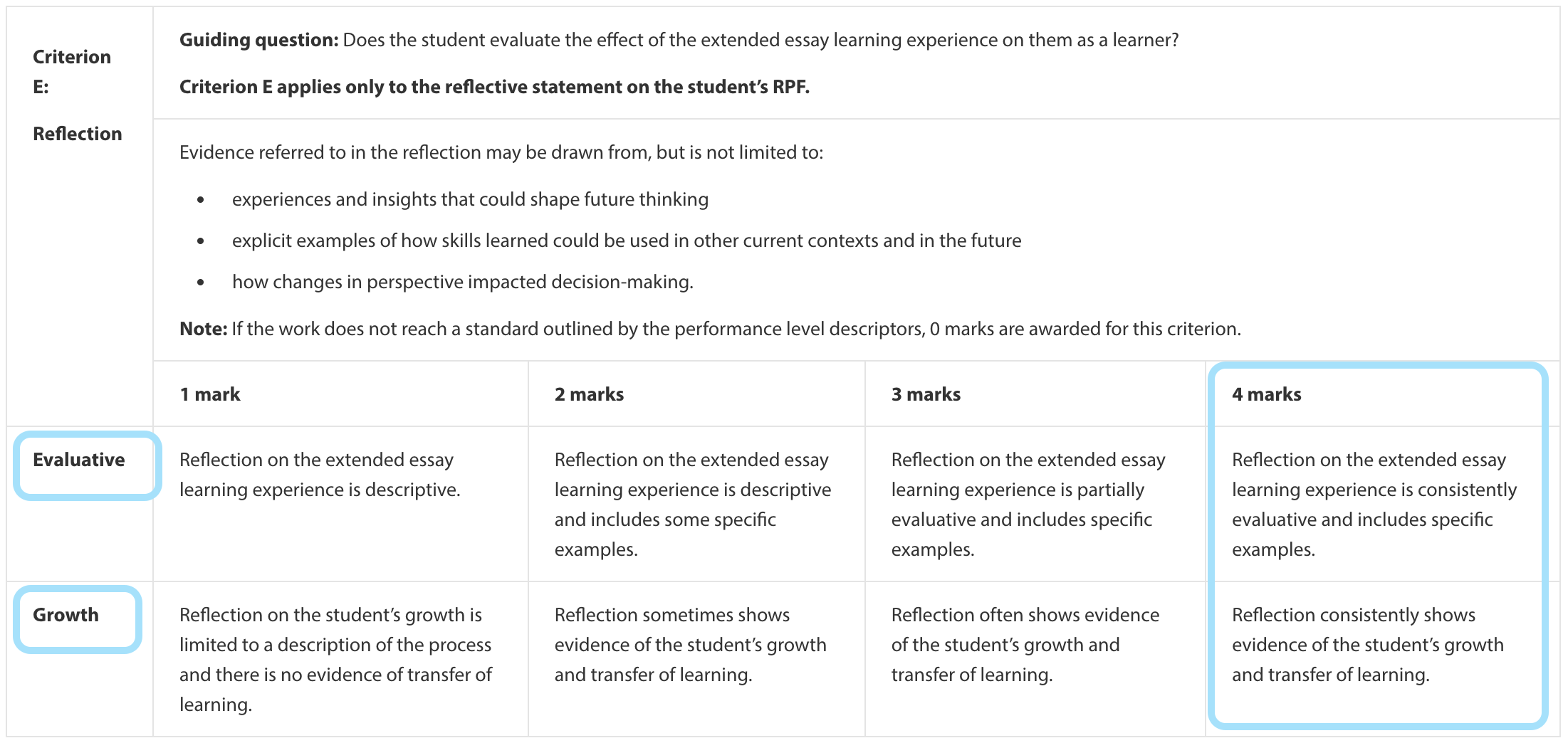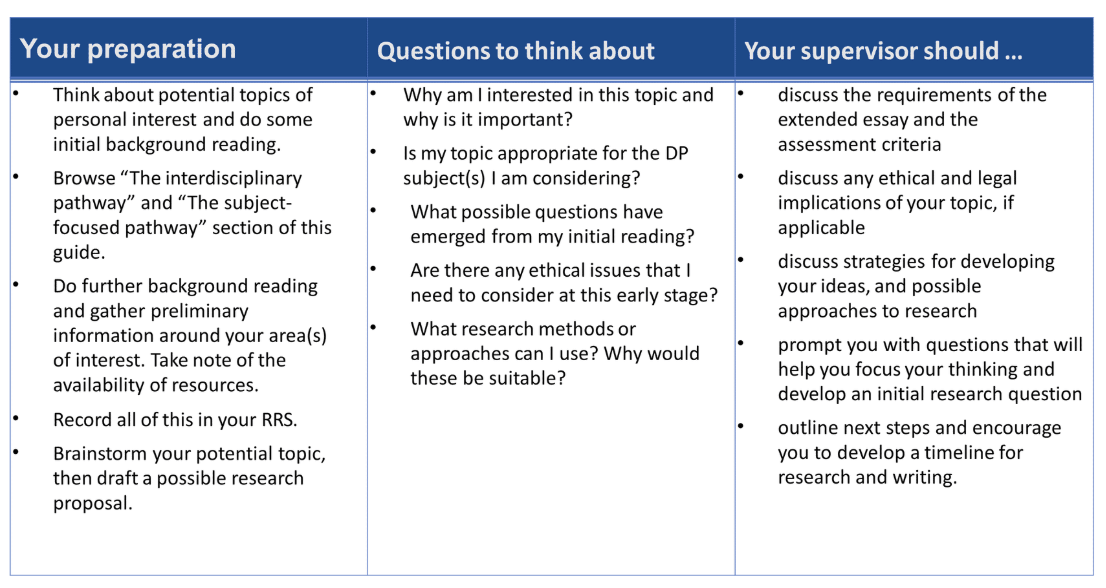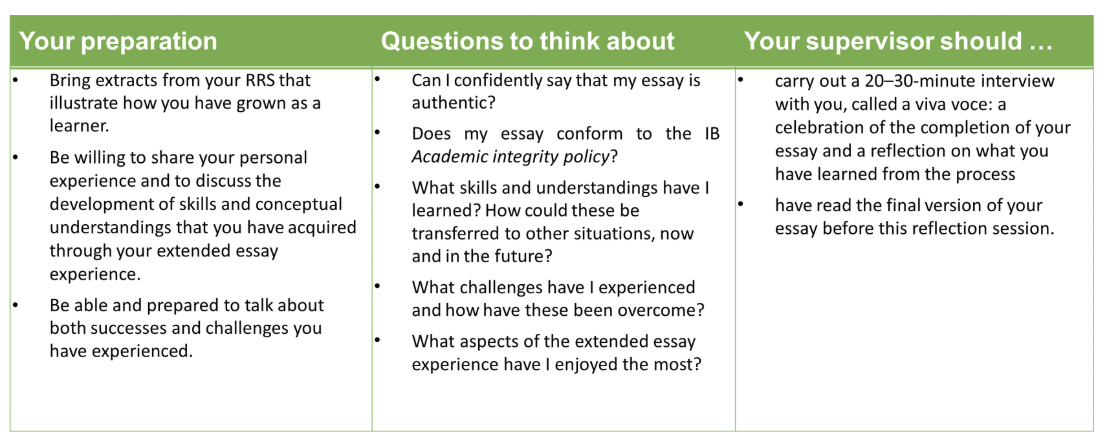Writing the Reflective Statement
- Your 500-word reflective statement is written at the end of the extended essay process and included on your RPF (Reflection Progress Form)
- Keeping a thoughtful and regular record of your reflective thinking along the way is essential to crafting a satisfying and effective reflective statement to accompany your essay.
Resources to help write the reflective statement
- My record of the viva voce
- My record of the other reflection sessions with my supervisor
- My completed extended essay
- My RRS or any other record of my reflective thinking
- Informal feedback from my supervisor and others
Ideas to include in your reflective statement
- The main ideas discussed in the viva voce
- Learning skills I developed that I could use elsewhere as a learner
- Insights I gained from researching and writing the extended essay
- Changes in my perspective on the topic
- The impact of the choices I made during the extended essay process
- Experiences and insights that could shape my future thinking
How the Reflection is Scored: see full details on the Assessment tab above.

Examiners look for the following in the reflective statement.
- Reflection on the extended essay learning experience is consistently evaluative and includes specific examples.
- Reflection consistently demonstrates the student’s growth and transfer of learning.
Evidence may include any of the following.
- Experiences and insights that could shape future thinking.
- Explicit examples of how skills learned could be used in other current contexts and in the future.
- How changes in perspective impacted decision-making.





